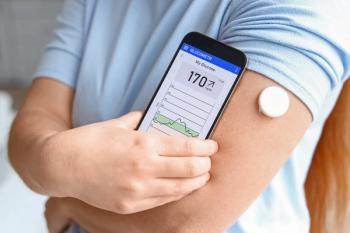
- July 2023
- Volume 89
- Issue 7
Expanding Tech-Check-Tech Will Move Pharmacy Into the Future
Product verification allows technicians to practice at the top of their license and frees pharmacists to interact with patients.
Tech-check-tech (TCT) formally known as Technician Product Verification (TPV), is the process of a technician verifying the quality of another technician’s dispensing process to ensure the right medication has been dispensed for the right patient.
Just as pharmacists learn the elements of pharmacology, the workflow tool of TCT requires knowledge of pharmacology for both therapeutic decision-making and accurate medication dispensing. Targeted training allows technicians to function at the top of their licenses while giving pharmacists additional time to engage directly with patients.1
One of the first articles on TCT, originally published in 1991,2 is still used as a standard for TCT studies,3 and the most recent article addressing advancement in technician roles was published in February 2023.4 Despite TCT’s long history of use, however, few states have permitted adoption of this proven technician task to be incorporated into everyday workflow.
In 2011, an article published in the American Journal of Health-System Pharmacy reported that 16 states had modified their practice code to include TCT as either a scope of practice or as a pilot program.5 Of those 16 states, 9 had clear language but permitted TCT only in hospital settings. The remaining states’ codes had language that was open to interpretation by leadership of the pharmacy practice setting. All states required a level of specialized education alongside work experience.5
The Pharmacy Technician Certification Board, which monitors state rules, regulations, and statutes, reports that 21 states now allow technicians to participate in TCT as part of their scope of practice.4 The practice settings that are permitted to utilize technicians for TCT vary among the states, similar to what was reported in 2011.5
Despite only partial implementation of TCT across the US, nearly all published research reports incredibly high accuracy rates for technicians utilizing TCT. In April 2020, Andreski et al reported in Innovations in Pharmacy3: “During the study period, 12,891 pharmacist-verified prescriptions (baseline) and 27,447 Validated Pharmacy Technician verified prescriptions were audited for accuracy. The aggregate verification error rate for pharmacist-verified prescriptions was 0.16% and 0.01% for Validated Pharmacy Technician–verified prescriptions. The mean error rate was significantly less for Validated Pharmacy Technician–verified prescriptions than for pharmacist-verified prescriptions (0.19 ± 0.174% vs 0.03 ± 0.089%, P = .020).”
This same report went on to state3: “This suggests TPV in the community pharmacy setting maintained patient safety. In this study, Validated Pharmacy Technicians were shown to be more accurate than pharmacists at performing product verification. The ability to delegate the product verification task holds the potential to free up pharmacist time for increased direct patient care. Increasing direct patient care by pharmacists in community pharmacies may have significant implications for improving patient outcomes and pharmacy quality.”
If the accuracy rates are this high for technicians, then why is the pharmacy profession not implementing this workforce resource?
Pharmacists want to engage with patients directly, and TCT can make that easier to do. In an Australian study published in 2020,1 Banks et al reported that pharmacy technicians practicing at an advanced scope resulted in both cost and time savings, linked primarily to the wage differences between pharmacists and technicians. Studies focusing on time savings demonstrated up to 5 minutes saved per task completed, including checking dispensed items, taking medication histories, and entering chemotherapy orders.1
Although this research was conducted in hospital pharmacies, it has implications for all practice sites. Consider local community pharmacies with automated packaging equipment along with high-speed, high-capacity central fill operations. With creativity, we could easily see additional applications for the qualified pharmacy technician to perform product verification and help ensure patient safety.
As all pharmacy practices cry out for qualified technician candidates, perhaps the profession is poised to offer a bona fide professional opportunity to grow through TCT. Pharmacy technicians have a great foundation for medication knowledge, which could be a valuable resource in efforts to help pharmacists gain more time to serve the patients. Rather than reinventing entry-level learning, pharmacy professionals could develop learning that accelerates the development and abilities of the profession, pushing pharmacies into the future.
References
- Banks VL, Barras M, Snoswell CL. Economic benefits of pharmacy technicians practicing at advanced scope: a systematic review. Res Social Adm Pharm. 2020;16(10):1344-1353. doi:10.1016/j. sapharm.2020.01.007
- Woller TW, Stuart J, Vrabel R, Senst B. Checking of unit dose cassettes by pharmacy technicians at three Minnesota hospitals. Am J Hosp Pharm. 1991;48(9):1952-1956.
- Andreski M, Martin E, Brouner VV, Sorum S. Advancing community pharmacy practice - a technician product verification pilot to optimize care. Innov Pharm. 2020;11(2):10.24926/iip.v11i2.2340. doi:10.24926/iip.v11i2.2340
- Sparkmon W, Barnard M, Rosenthal M, Desselle S, Ballou JM, Holmes E. Pharmacy technician efficacies and workforce planning: a consensus building study on expanded pharmacy technician roles. Pharmacy (Basel). 2023;11(1):28. doi:10.3390/pharmacy11010028
- Adams AJ, Martin SJ, Stolpe SF. “Tech-Check-Tech”: a review of the evidence on its safety and benefits. Am J Health Syst Pharm. 2011;68(19):1824-1833. doi:10.2146/ajhp110022
Articles in this issue
over 2 years ago
Brain Health Watchover 2 years ago
Pet Peeves — Brought To You By The Sassy Pharmacistover 2 years ago
Interactive Case Studiesover 2 years ago
Postnasal Dripover 2 years ago
Promoting Medication Safety Improves Health Outcomesover 2 years ago
Do Pharmaceutical Brand Colors Affect Consumer Buying Decisions?Newsletter
Stay informed on drug updates, treatment guidelines, and pharmacy practice trends—subscribe to Pharmacy Times for weekly clinical insights.
















































































































































































































